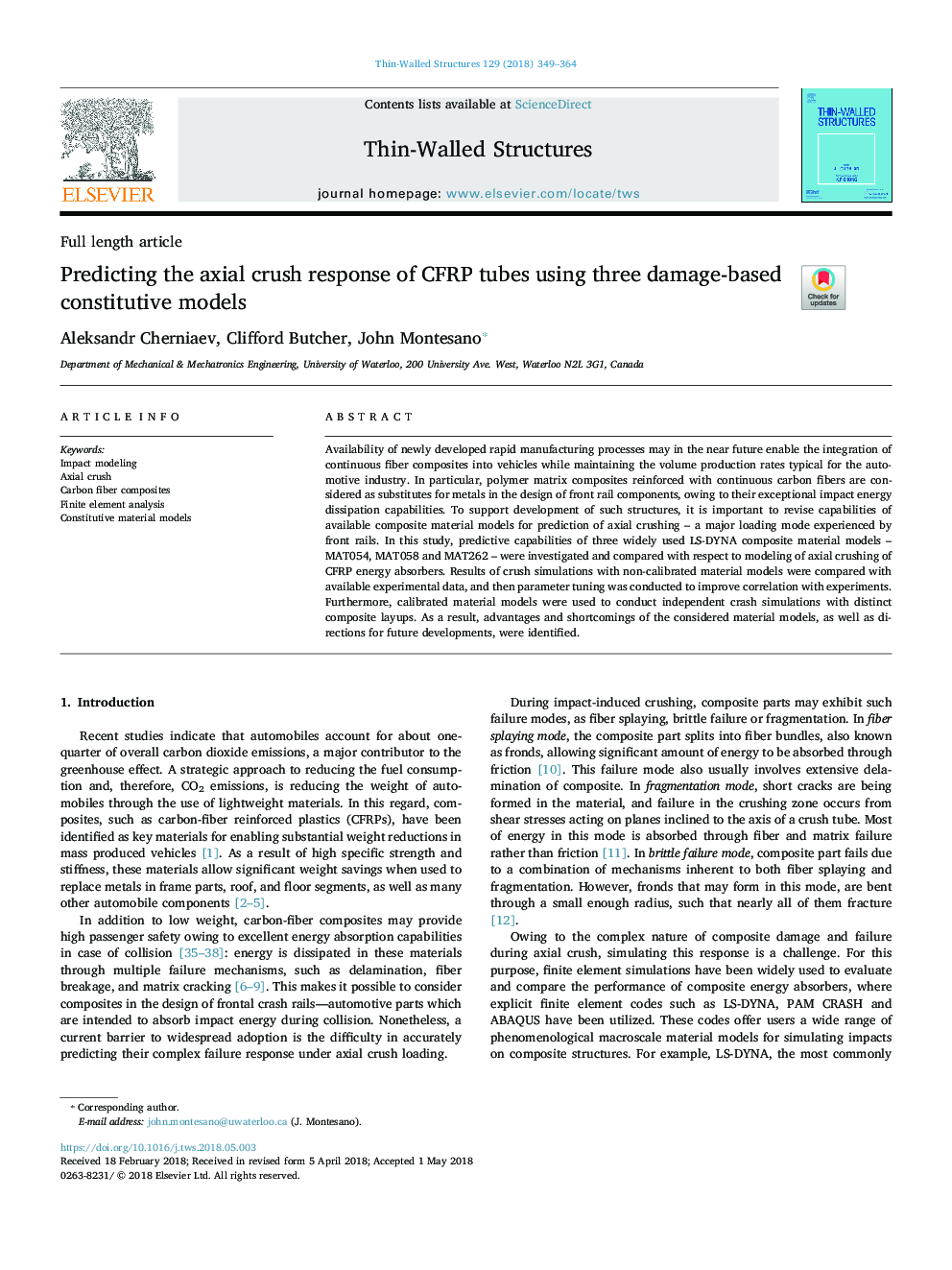| Article ID | Journal | Published Year | Pages | File Type |
|---|---|---|---|---|
| 6777516 | Thin-Walled Structures | 2018 | 16 Pages |
Abstract
Availability of newly developed rapid manufacturing processes may in the near future enable the integration of continuous fiber composites into vehicles while maintaining the volume production rates typical for the automotive industry. In particular, polymer matrix composites reinforced with continuous carbon fibers are considered as substitutes for metals in the design of front rail components, owing to their exceptional impact energy dissipation capabilities. To support development of such structures, it is important to revise capabilities of available composite material models for prediction of axial crushing - a major loading mode experienced by front rails. In this study, predictive capabilities of three widely used LS-DYNA composite material models - MAT054, MAT058 and MAT262 - were investigated and compared with respect to modeling of axial crushing of CFRP energy absorbers. Results of crush simulations with non-calibrated material models were compared with available experimental data, and then parameter tuning was conducted to improve correlation with experiments. Furthermore, calibrated material models were used to conduct independent crash simulations with distinct composite layups. As a result, advantages and shortcomings of the considered material models, as well as directions for future developments, were identified.
Related Topics
Physical Sciences and Engineering
Engineering
Civil and Structural Engineering
Authors
Aleksandr Cherniaev, Clifford Butcher, John Montesano,
